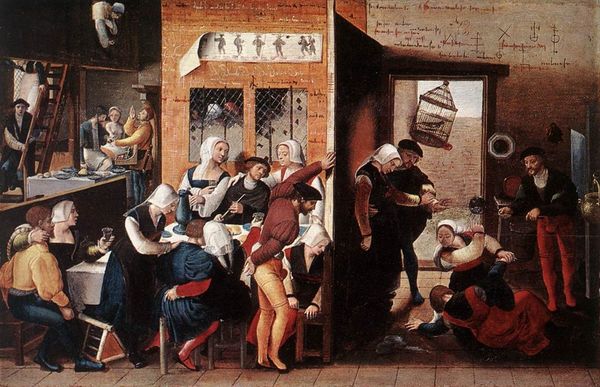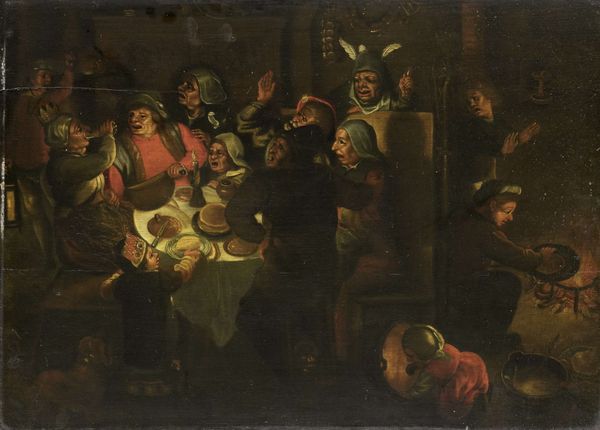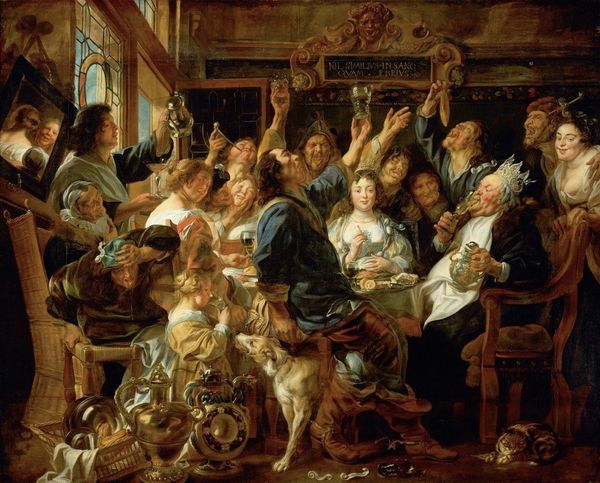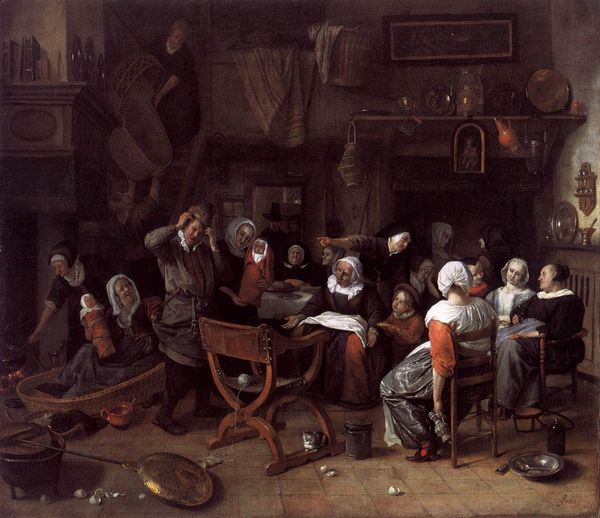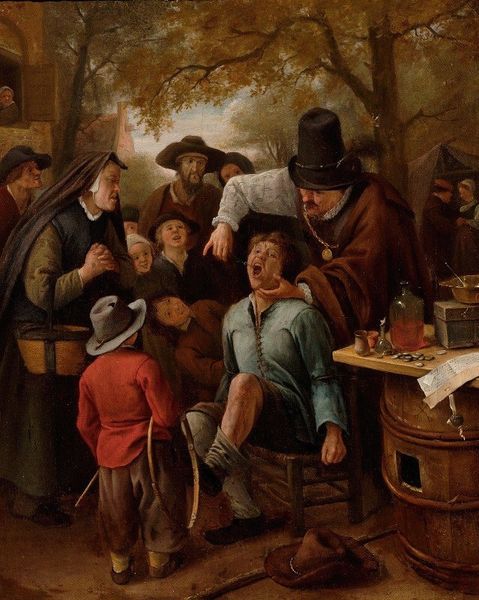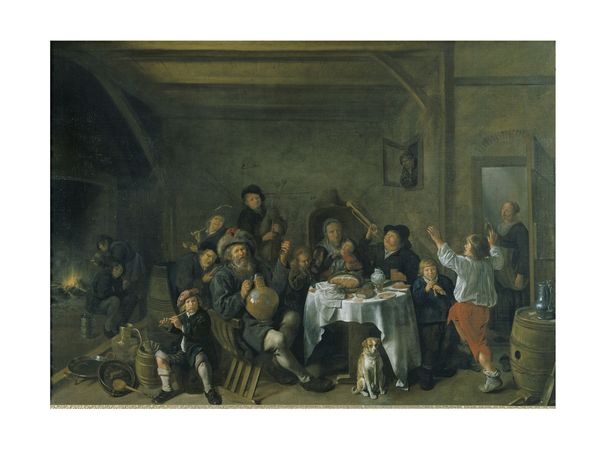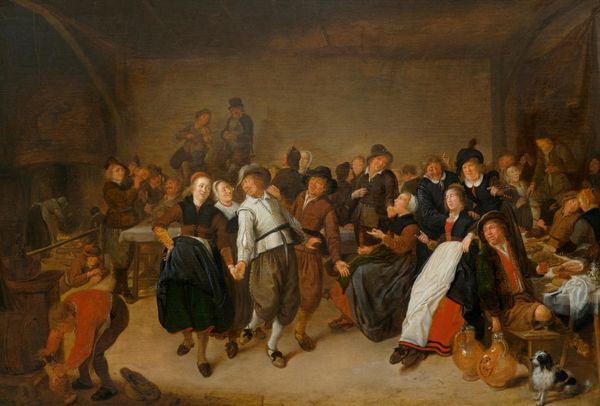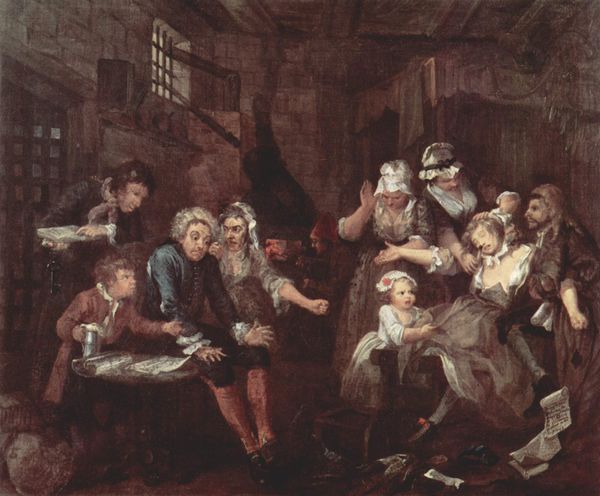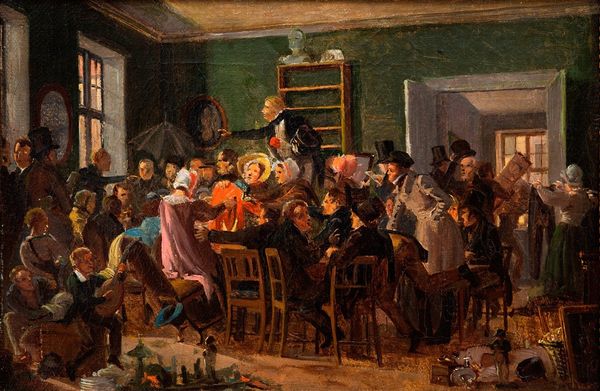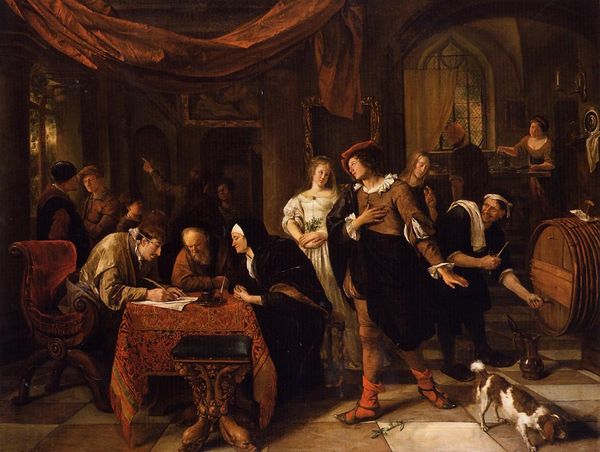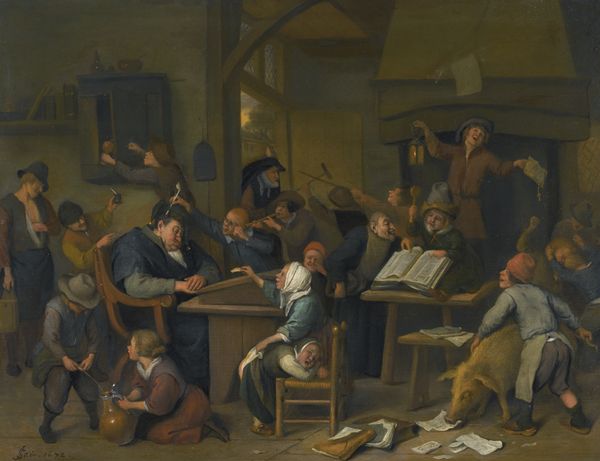
oil-paint
#
gouache
#
oil-paint
#
soviet-nonconformist-art
#
social-realism
#
oil painting
#
group-portraits
#
genre-painting
#
mixed media
Copyright: Sergiy Grigoriev,Fair Use
Curator: Looking at Sergiy Grigoriev's "At the Meeting," painted in 1947, I'm immediately struck by the composition. The artist has masterfully arranged the figures, mainly children, in rows to create a sense of depth and focus. The somber tonality is remarkable, with the browns and reds forming the chromatic range. What's your take? Editor: Yes, the initial impact is decidedly muted and serious. These are children, yet there's a weight in their posture, particularly the boy with a resolute stance. It does not immediately conjure up the energy that is usually associated with kids, does it? I find myself drawn to understanding what such an atmosphere would mean from the perspective of cultural psychology. Curator: Well, "At the Meeting" is an interesting artifact of its time, reflecting the prevailing aesthetic of social realism that was popular in the Soviet era. However, unlike standard Soviet pieces, I'd argue there is not any propagandistic fanfare here. Instead, we get a rare peek into society. Notice the layers of clothing on children who fill these spaces—scarves, coats, hats, like the ones one the little girl holding her doll—visual signs that hint towards resilience and a deep collective memory of recent wartime austerity. Editor: That's an interesting idea. The dolls would probably resonate with viewers in a deeper way then. Speaking more strictly on compositional structure: Observe how the strong vertical lines of the benches are effectively used to create division but they also serve to corral attention, almost symbolically guiding the viewer's gaze, adding another layer to this painting's visual experience. Curator: Quite, and observe the various ages and even social strata of people gathered, their faces showing a mix of solemnity, worry and attentiveness. The lighting too creates some mystery, not everything is shown at face value in this genre-painting scene. Even their clothes represent layers of history and continuity through periods of war and change. It prompts questions about purpose and significance: "What gathering is this?" or "What future did such a space hold?" Editor: Well, regardless of context, it’s clear that Grigoriev succeeded in creating a somber study through considered use of composition. There is no doubt that beyond subject matter there is considerable structure here for analysis and discussion for generations of scholars and public to come!
Comments
No comments
Be the first to comment and join the conversation on the ultimate creative platform.
